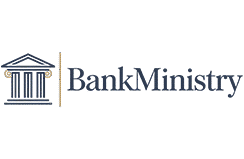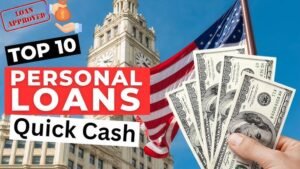Starting a business in the United States is an exciting yet challenging endeavor, especially for new entrepreneurs navigating the complex world of financing. Startup business loan rates can make or break a young company’s financial strategy, as they directly impact the cost of borrowing and long-term sustainability. In 2025, with economic conditions shifting due to Federal Reserve policies and lender competition, understanding these rates is more critical than ever. This comprehensive guide, based on in-depth analysis of trusted sources, provides everything you need to know about startup business loan rates, including loan types, influencing factors, practical steps to secure the best rates, and common pitfalls to avoid. Whether you’re launching a tech startup in Silicon Valley or a small retail shop in Texas, this article will empower you to make informed financing decisions.
This guide, offering a detailed exploration of startup business loan rates in 2025. It covers the “what” and “why” of business loan rates, practical applications for startups, broader economic contexts, and actionable strategies to optimize your borrowing experience. Let’s dive in.
What Are Startup Business Loan Rates?
Startup business loan rates refer to the interest rates or fees charged by lenders when providing financing to new businesses. These rates represent the cost of borrowing money, expressed as a percentage of the loan principal, and can significantly affect the total repayment amount. For startups, which often lack extensive financial history or collateral, securing favorable rates is crucial to maintaining cash flow and achieving growth.
Why Rates Matter for Startups
- Cash Flow Impact: High interest rates increase monthly payments, straining limited startup budgets. For example, a $50,000 loan at 15% interest over 5 years costs significantly more than one at 7%, potentially diverting funds from marketing or hiring.
- Long-Term Viability: Excessive borrowing costs can hinder a startup’s ability to scale, especially in the first 1–2 years when revenue is unpredictable.
- Competitive Advantage: Lower rates allow startups to invest more in product development, customer acquisition, or operations, giving them an edge in competitive markets like New York or San Francisco.
How Rates Are Determined
Lenders assess several factors to set startup business loan rates:
- Creditworthiness: Personal and business credit scores heavily influence rates. A FICO score above 690 often secures better terms, while scores as low as 560 may qualify for high-rate loans.
- Business Metrics: Time in business (typically 6 months to 2 years required) and annual revenue ($50,000 minimum for most lenders) affect lender risk perception.
- Loan Type: Different loans (e.g., term loans, SBA loans, lines of credit) carry unique rate structures based on risk and repayment terms.
- Economic Conditions: The Federal Reserve’s federal funds rate, which influences the prime rate (7.5% as of June 2025), sets a baseline for loan pricing.
- Collateral: Secured loans, backed by assets like equipment or invoices, typically have lower rates than unsecured loans.
Types of Startup Business Loans and Their Rates in 2025
Startups have access to various loan types, each with distinct startup business loan rates and suitability based on business needs. Below, we explore the most common options, drawing from data analyzed from sources like LendingTree, NerdWallet, Lendio, and American Express.
1. Term Loans
Term loans provide a lump sum repaid over a fixed period with fixed or variable interest rates. They are ideal for startups needing capital for equipment, inventory, or expansion.
- Rates: Average rates range from 6.54% to 11.7% for bank term loans, with top-tier borrowers securing rates as low as 3.33% (NerdWallet, LendingTree). Online lenders may charge 6% to 99%, depending on credit.
- Eligibility: Requires at least 6 months in business, a FICO score of 600+, and $50,000+ in revenue. Startups with less than a year in business may face higher rates.
- Pros: Predictable payments, lower rates for strong credit, suitable for large one-time expenses.
- Cons: Strict qualifications, lengthy approval processes (2–4 weeks for banks).
- Example: A Silicon Valley tech startup borrowing $100,000 at 7.4% over 5 years pays approximately $2,000 monthly, totaling $120,000 in repayments.
2. SBA Loans
SBA loans, backed by the Small Business Administration, offer low rates due to government guarantees but require more documentation and time.
- Rates: 10.5% to 15.5% for SBA 7(a) loans, based on the prime rate (7.5%) plus SBA maximums:
- ≤ $25,000: 15.5%
- $25,001–$50,000: 14.5%
- $50,001–$250,000: 13.5%
- $250,000: 12.5%
- SBA 504 loans (for real estate/equipment) range from 5% to 7%, tied to the 10-year Treasury note (NerdWallet).
- Eligibility: Requires 2+ years in business, a FICO score of 690+, and strong financials. Startups under 2 years may qualify through SBA microloans ($500–$50,000).
- Pros: Low rates, long repayment terms (up to 25 years for 504 loans), government backing.
- Cons: Lengthy approval (1–2 months), extensive paperwork, collateral often required.
- Example: A Chicago restaurant startup securing a $200,000 SBA 7(a) loan at 12.5% over 7 years pays about $3,300 monthly, ideal for long-term investments.
3. Business Lines of Credit
Business lines of credit provide flexible access to funds, allowing startups to draw and repay as needed, paying interest only on the used amount.
- Rates: 3% to 60.9%, with top lenders like American Express offering 3% for excellent credit and online lenders charging up to 60.9% for riskier borrowers (LendingTree, NerdWallet).
- Eligibility: Requires 6 months to 1 year in business, a FICO score of 560+, and $50,000+ in revenue.
- Pros: Flexibility for cash flow needs, only pay interest on drawn funds, reusable credit line.
- Cons: High rates for poor credit, variable rates can increase costs.
- Example: A Miami retail startup with a $50,000 line of credit at 10% uses $20,000, paying $2,000 annually in interest if not repaid quickly.
4. Merchant Cash Advances (MCAs)
Merchant cash advances provide quick cash in exchange for a percentage of future revenue, often daily or weekly.
- Rates: Factor rates of 1.1 to 1.5, equivalent to 18%+ interest (Lendio, NerdWallet). Total costs can exceed 50% APR for short-term advances.
- Eligibility: Minimal requirements (3–6 months in business, 500+ FICO score, $10,000+ monthly revenue), ideal for startups with poor credit.
- Pros: Fast funding (1–3 days), lenient qualifications, no collateral needed.
- Cons: Extremely high costs, daily repayments strain cash flow.
- Example: A Los Angeles e-commerce startup borrows $30,000 at a 1.3 factor rate, repaying $39,000 over 6 months via 15% of daily sales.
5. Invoice Factoring
Invoice factoring allows startups to sell unpaid invoices to lenders for immediate cash, with fees based on invoice value.
- Rates: Factoring fees start at 3%, with advances of 75%–95% of invoice value (LendingTree, Lendio).
- Eligibility: Requires consistent invoicing, no minimum time in business, and verifiable invoices.
- Pros: Improves cash flow, no credit check for clients’ invoices, fast funding.
- Cons: Fees reduce profits, dependency on client payments.
- Example: A Dallas consulting startup factors $50,000 in invoices at a 3% fee, receiving $47,500 upfront and the remainder (minus fees) after client payment.
6. Microloans
Microloans are small loans ($500–$50,000) offered by nonprofits, CDFIs, or the SBA, often for underserved startups.
- Rates: Vary widely, typically 8% to 13% for SBA microloans, higher for other providers (NerdWallet).
- Eligibility: Lenient criteria, often targeting minority-owned, women-owned, or rural startups.
- Pros: Accessible for new businesses, flexible use, mentoring often included.
- Cons: Small loan amounts, limited availability.
- Example: A rural Texas startup secures a $10,000 SBA microloan at 10% over 6 years, paying $222 monthly.
Factors Influencing Startup Business Loan Rates
Understanding the factors that drive startup business loan rates is essential for securing favorable terms. These factors, drawn from the analyzed sources, reflect both borrower-specific and external influences.
1. Creditworthiness
- Personal Credit Score: Most startups lack a business credit history, so lenders rely on personal FICO scores. Scores above 690 secure lower rates (e.g., 6.54% for bank loans), while scores as low as 560 qualify for high-rate online loans (up to 99%).
- Business Credit: If available, Dun & Bradstreet or Experian business scores can lower rates for startups with 1+ years in business.
- Impact: A Seattle tech founder with a 750 FICO score might secure a 7% term loan, while a 600 score could result in a 20% rate, doubling borrowing costs.
2. Time in Business
- Requirement: Most lenders require 6 months to 2 years in business. Startups under 6 months are limited to MCAs or invoice factoring.
- Impact: Longer operational history reduces lender risk, lowering rates. For example, a 2-year-old startup may qualify for a 10% SBA loan, while a 3-month-old startup faces 18%+ MCA rates.
3. Annual Revenue
- Requirement: Lenders typically require $50,000–$250,000 in annual revenue. Startups with lower revenue may qualify for MCAs or microloans but face higher rates.
- Impact: Strong revenue signals repayment ability, securing better terms. A Boston startup with $200,000 in revenue might get an 8% line of credit, while one with $20,000 faces 30%+.
4. Collateral
- Secured vs. Unsecured: Secured loans (e.g., equipment loans) have lower rates (5%–10%) due to reduced risk, while unsecured loans (e.g., MCAs) range from 18%–99%.
- Impact: A Florida startup pledging equipment as collateral might secure a 6% loan, while an unsecured loan could cost 25%.
5. Economic Conditions
- Federal Reserve and Prime Rate: The prime rate (7.5% in June 2025) influences variable-rate loans like SBA 7(a). No rate cuts have occurred since December 2024, but a cut is expected in late 2025, potentially lowering rates (NerdWallet).
- Market Competition: In competitive markets like New York, lenders may offer lower rates (e.g., 6%) to attract startups, while less competitive regions see higher rates (American Express).
6. Loan Amount and Term
- Amount: Larger loans (> $250,000) often have lower rates (e.g., 12.5% for SBA loans) due to economies of scale, but startups typically borrow smaller amounts ($10,000–$100,000).
- Term: Longer terms (5–25 years) may have higher rates due to risk, but lower monthly payments. Short-term loans (6–18 months) have lower rates but higher payments.
How to Secure the Best Startup Business Loan Rates
Securing favorable startup business loan rates requires strategic preparation and research. Below are actionable steps tailored for U.S. startups in 2025.
1. Improve Your Credit Score
- Check Your Credit: Use free tools like Experian or LendingTree’s Spring platform to monitor your FICO score. Dispute errors (e.g., incorrect late payments) to boost your score.
- Pay Down Debt: Reduce credit card balances to lower your debt-to-income ratio, improving lender confidence.
- Example: A Denver startup founder increased their FICO score from 620 to 700 over 6 months by paying off $5,000 in credit card debt, securing a 9% term loan instead of 15%.
2. Compare Multiple Lenders
- Use Marketplaces: Platforms like LendingTree (300+ lenders), Lendio (75+ lenders), and NerdWallet offer single applications to compare offers. Soft credit pulls prevent score damage.
- Direct Lenders: Contact banks (e.g., Bank of America, Wells Fargo) or credit unions for lower rates (6.54%–11.7%) if you meet strict criteria.
- Example: A San Diego startup applied through LendingTree, receiving three offers: 8% from a bank, 12% from an online lender, and 20% from an MCA, choosing the bank for savings.
3. Leverage SBA Resources
- SBA 7(a) and Microloans: Apply through SBA-approved lenders for rates as low as 10.5%. Use SBA’s Lender Match tool to find local lenders.
- SBDCs and SCORE: Free counseling from Small Business Development Centers or SCORE can guide startups through SBA applications.
- Example: A New Orleans startup used an SBDC to navigate SBA 7(a) requirements, securing a $150,000 loan at 12.5% instead of a 20% online loan.
4. Consider Alternative Financing
- Invoice Factoring: For startups with unpaid invoices, factoring provides quick cash at 3%+ fees, avoiding high interest rates.
- Microloans: Nonprofits like Accion Opportunity Fund offer microloans for startups with limited credit, often at 8%–13%.
- Example: An Atlanta startup factored $40,000 in invoices at a 4% fee, receiving $38,400 upfront to cover operational costs.
5. Negotiate Terms
- Ask for Lower Rates: If you have strong credit or revenue, negotiate with lenders. Some online lenders are flexible to compete.
- Clarify Fees: Ensure transparency on origination (1%–6%), underwriting, or SBA guarantee fees (0%–3.75%) to avoid surprises.
- Example: A Phoenix startup negotiated a 0.5% reduction on a $75,000 term loan, saving $3,750 over 5 years.
6. Use Loan Calculators
- Tools: NerdWallet and Lendio offer free calculators to estimate monthly payments and total costs based on loan amount, rate, and term.
- Example: A Seattle startup used NerdWallet’s calculator to compare a $50,000 loan at 8% (5 years, $1,013/month) vs. 12% (3 years, $1,660/month), choosing the longer term for cash flow.
Practical Applications for Startups
Case Study: Tech Startup in Austin
A tech startup in Austin, Texas, launched in 2024 with $20,000 in revenue and a 650 FICO score. Needing $100,000 for software development, they explored options:
- Bank Term Loan: Rejected due to insufficient time in business (1 year required).
- SBA Microloan: Secured $30,000 at 10% through a CDFI, with monthly payments of $667 over 5 years.
- Line of Credit: Approved for $70,000 at 15% through an online lender, using $20,000 initially for flexible expenses. By combining a microloan and line of credit, they minimized costs while meeting funding needs.
Case Study: Retail Startup in Miami
A Miami retail startup with 6 months in business and $15,000 monthly revenue needed $50,000 for inventory. With a 580 FICO score, they faced high rates:
- MCA: Approved for $50,000 at a 1.3 factor rate, repaying $65,000 via 15% of daily sales over 8 months.
- Invoice Factoring: Factored $30,000 in invoices at a 3% fee, receiving $29,100 upfront. They chose factoring to avoid MCA’s high costs, preserving cash flow for growth.
Loan Calculator Example
For a $50,000 loan:
- 5-Year Term Loan at 8%: Monthly payment = $1,013, total interest = $10,780.
- 3-Year Term Loan at 12%: Monthly payment = $1,660, total interest = $9,760.
- MCA at 1.3 Factor Rate: Repay $65,000 over 6 months, equivalent to 30%+ APR. Startups should use calculators to weigh monthly payments against total costs, prioritizing cash flow.
Broader Context: Economic and Market Factors
Federal Reserve and Prime Rate
The Federal Reserve’s federal funds rate influences the prime rate, which was 7.5% in June 2025. No rate cuts have occurred since December 2024, but a potential cut in late 2025 could lower startup business loan rates by 0.25%–0.5%, per NerdWallet. Startups should monitor Fed announcements via sources like Bloomberg or CNBC.
Lender Competition
In competitive U.S. markets (e.g., California, New York), lenders offer lower rates to attract startups. For example, American Express provides lines of credit at 3% for top-tier borrowers. In less competitive regions (e.g., rural Midwest), rates may be 1%–2% higher due to fewer lenders (American Express).
Economic Trends
- Inflation: Persistent inflation in 2025 keeps rates elevated, as lenders hedge against rising costs.
- Startup Growth: The U.S. saw 5.5 million new business applications in 2024 (U.S. Census Bureau), increasing demand for startup loans and influencing lender terms.
- Technology: Online lenders like Funding Circle and Kabbage use AI to streamline approvals, offering faster funding but higher rates (6%–99%).
Common Mistakes to Avoid When Securing Startup Loans
1. Ignoring Total Costs
- Mistake: Focusing only on interest rates, not APR or fees (e.g., 1%–6% origination, 0%–3.75% SBA guarantee fees).
- Solution: Calculate total repayment using loan calculators. A $50,000 loan at 10% with a 5% origination fee costs $2,500 upfront, increasing effective costs.
2. Overlooking High-Rate Loans
- Mistake: Accepting MCAs or high-rate online loans (18%–99%) without exploring alternatives like microloans or factoring.
- Solution: Prioritize low-cost options (e.g., SBA loans, credit unions) or negotiate with lenders.
3. Applying Without Prequalification
- Mistake: Submitting multiple applications, triggering hard credit pulls that lower scores.
- Solution: Use platforms like LendingTree or NerdWallet for soft-pull prequalification to compare offers safely.
4. Neglecting Credit Improvement
- Mistake: Applying with a low FICO score (e.g., 560), resulting in high rates.
- Solution: Delay borrowing to improve credit by paying down debt or disputing errors, potentially saving thousands.
5. Underestimating Documentation
- Mistake: Failing to prepare financial statements, tax returns, or business plans for SBA or bank loans.
- Solution: Work with SBDCs or accountants to compile documents, streamlining approvals.
Safety Precautions for Startups
- Consult Professionals: Work with financial advisors, SBDCs, or SCORE mentors to validate loan decisions. For example, a CPA can assess if a 15% SBA loan fits your cash flow.
- Avoid Predatory Lenders: High-rate MCAs (18%+) or loans with unclear fees can trap startups in debt. Verify lender reputations via BBB or Trustpilot.
- Understand Terms: Read loan agreements for hidden fees (e.g., prepayment penalties) or variable rate increases. For example, SBA loans may charge penalties for early repayment within 3 years.
- Monitor Cash Flow: Ensure monthly payments don’t exceed 20%–30% of revenue to avoid default. Use budgeting tools like QuickBooks.
- Protect Personal Finances: Avoid loans requiring personal guarantees unless you’re confident in repayment, as default risks personal assets.
Frequently Asked Questions
What are the average startup business loan rates in 2025?
Average rates range from 3% to 60.9%, depending on loan type and credit. Bank term loans average 6.54%–11.7%, SBA 7(a) loans 10.5%–15.5%, lines of credit 3%–60.9%, MCAs 18%+, and invoice factoring fees start at 3%.
Can startups with no credit history get loans?
Yes, startups with no credit history can access MCAs, invoice factoring, or microloans, but rates are higher (18%–99%). Building personal credit (FICO ≥ 600) improves options.
How can startups lower loan rates?
Improve credit scores, compare multiple lenders, apply for SBA loans, or use collateral. Prequalification through platforms like NerdWallet helps identify low-rate offers.
Are SBA loans worth it for startups?
SBA loans offer low rates (10.5%–15.5%) and long terms but require 2+ years in business and extensive documentation. Microloans are more accessible for startups under 2 years.
Disclaimer: This content is for informational purposes only. Always consult a qualified financial professional for advice and loan decisions.




